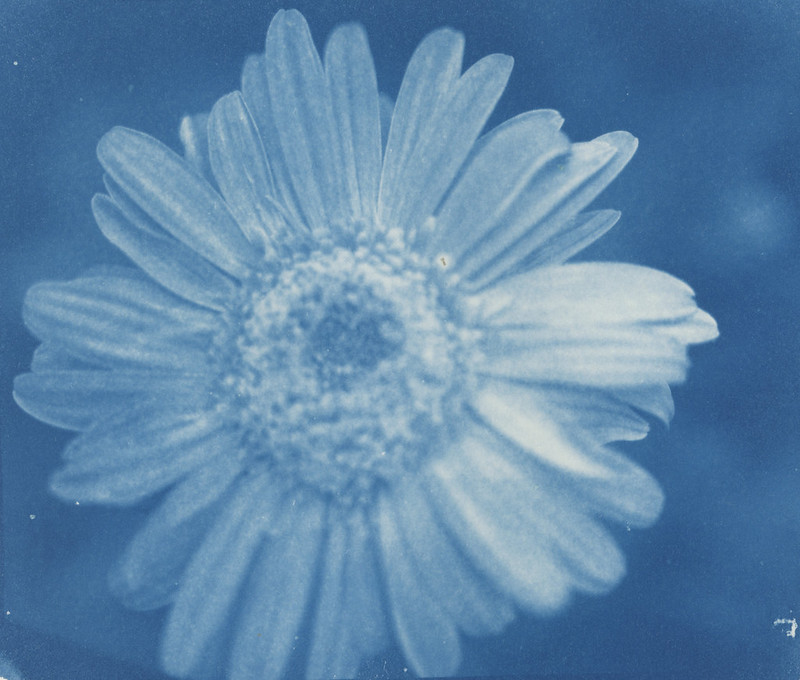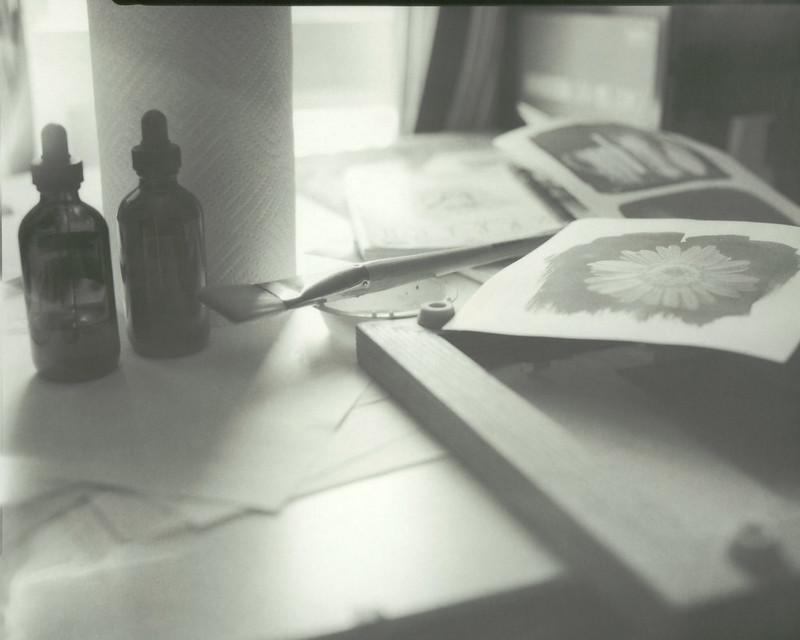It is a very straightforward procedure. Two chemicals (potassium ferricyanide and ammonium citrate) are mixed separately and in this form they are quite stable and can be kept for a long time. Once mixed in a 1:1 ratio, they become (mildly) photo-sensitive. The solution is applied to a surface into which it will soak and/or stick. Generally people use watercolor paper, but cloth, wood or other substrates can be used. I use a brush and just paint it on, but many people use a glass or plastic rod to push the solution across the paper to achieve a very even coating. The paper is allowed to dry (I am impatient, so I take a hair dryer to it in a dark bathroom). Then a negative is laid (emulsion side down) on the coated paper and a piece of glass is placed on top of that to keep everything in contact and flat. I use a contact printing frame that is designed especially for doing just this. The cyanotype emulsion (and also many others) is sensitive to UV light, so either buy an expensive printing light, or if you live in a sunny climate, just use sunlight. I take my printing frame out into the sun and let it sit for anywhere between 5 and 30min depending on the density of the negative. Once the exposure is done, you have to 'develop' the print. Fortunately, the only chemical needed for development is good ol' water. I usually rinse the print under gently running water for a minute or so and then let it soak face down in the sink for another 10-20min. I end up with something like this.

You can see some specks and other artifacts indicating that I didn't blow the dust off of the paper and/or the negative before I made the print. It all adds to the imperfection and uniqueness so don't sweat it.
While I was waiting for some other cyanotypes to dry, I decided to get the Speed Graphic out and load up a couple of sheets of Harman Direct Positive paper. This is photographic paper that creates a regular photograph, sort of like a Polaroid except that you have to develop it in the darkroom. One of the photos I took was of my work area I was using to do the cyanotypes. This paper is very 'contrasty' and you can lose shadow details very quickly. The solution is to 'pre-flash' the paper. That just means to expose it to a little bit of light before you put it in the camera. That way the darkest parts of the image are brightened a little, thereby reducing the overall contrast. This is another fun way to make photos and what you end up with is 'one of a kind' since you are not going to make any more prints because you don't have a negative. Obviously, I scanned the photo, so it isn't really as unique as if I put it in a frame and it could only be viewed by coming to my house, but you get the point. (note: the daisy cyanotype is in this photo and you can see the brush marks where I applied the chemicals to the paper)

So there you go. Browse over to Photographer's Formulary and pick up a cyanotype kit. It is tons of fun!!
No comments:
Post a Comment